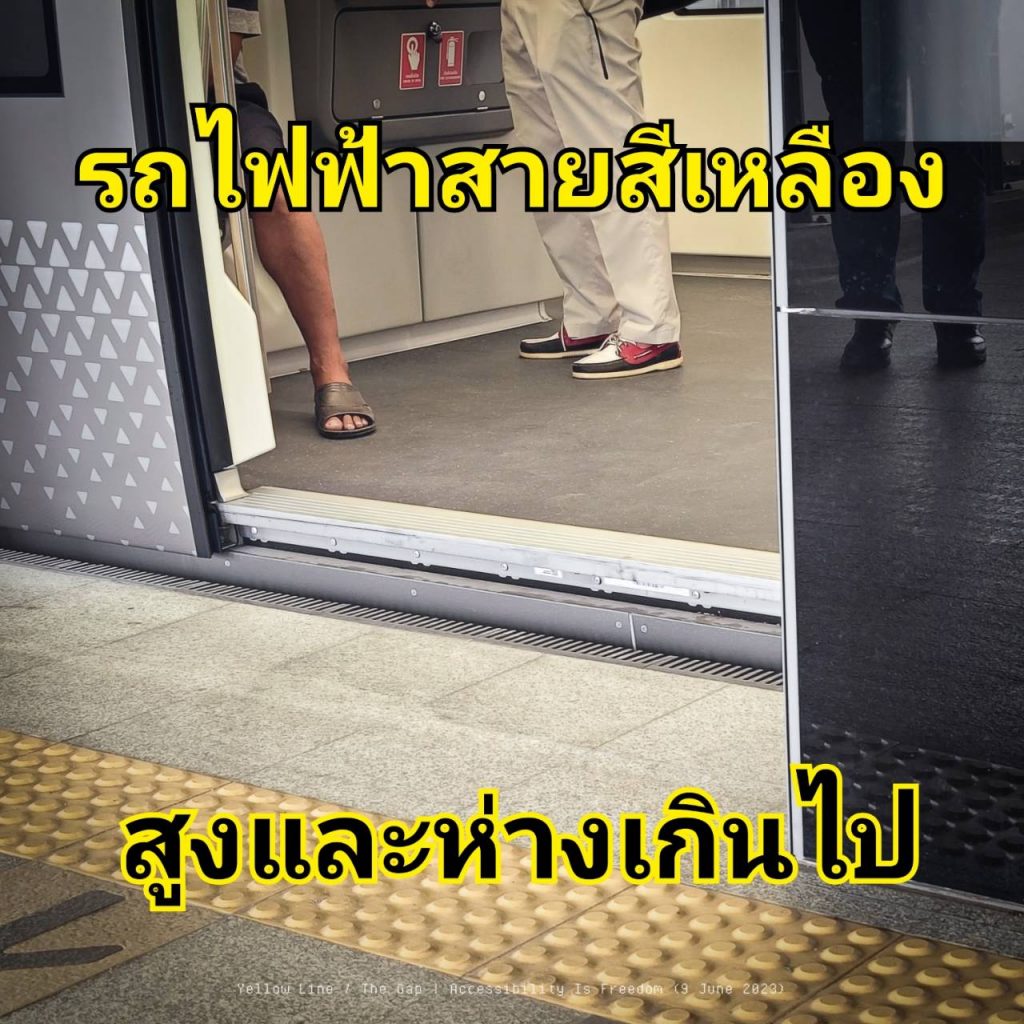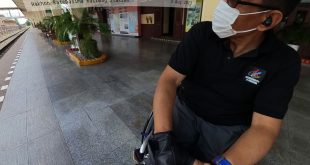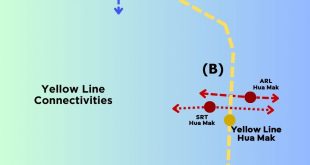
“Please mind the gap between the train and the platform”
While traveling, we will hear an announcement every time. The gap can cause accidents, so the system has to make frequent announcements.
Most people just need to be cautious and comfortably step over the gap. However, users with mobility issues, especially wheelchairs users, have to request and wait for assistance.
Why is there a gap?
1. The train carriages have a lower section and when the train is in motion, the carriages sway like the cars we drive every day.
2. As the train enters the station, to prevent the train from hitting the platform, there needs to be a gap, according to the specifications for the train and its speed.
As the Yellow Line currently undergoing testing, we found that “the gap between the platform and the train floor is higher and wider than any other running system”.
To prevent passengers from slipping, the Yellow Line train uses gap fillers, rubber blocks that prevent feet from falling into the gap. However, passengers using wheelchairs still face challenges.
Imagine all the train systems running in Bangkok, I can easily get on and off by myself. But for the Yellow Line, I’m still hesitant. The only thing I can do is request assistance from the station staff and it is not recommended to try.
Recommendations for building a new system:
1. A good public transportation system is one that allows “everyone” to travel independently.
2. Consider “all groups” and never forget that everyone’s physical condition can change at any time, including service providers or builders. Emphasize “everyone”.
3. Minimize the height and distance as much as possible.
4. New systems should have automated platform extenders in the train manufacturing process, allowing passengers to access and exit comfortably and safely.
These suggestions are provided as information for the development of new infrastructure.
If the system is well-designed, we wouldn’t have to hear the announcement, and everyone wouldn’t have to request assistance or wait for help.
The gap, which is a barrier, would be reduced, and service providers could reduce staff, workload, and expenses. It’s a WIN-WIN for everyone.
https://www.accessibilityisfreedom.org/en/category/Public-Transportation/
 Accessibility Is Freedom เข้าถึงและเท่าเทียม | Accessible and Equal
Accessibility Is Freedom เข้าถึงและเท่าเทียม | Accessible and Equal


